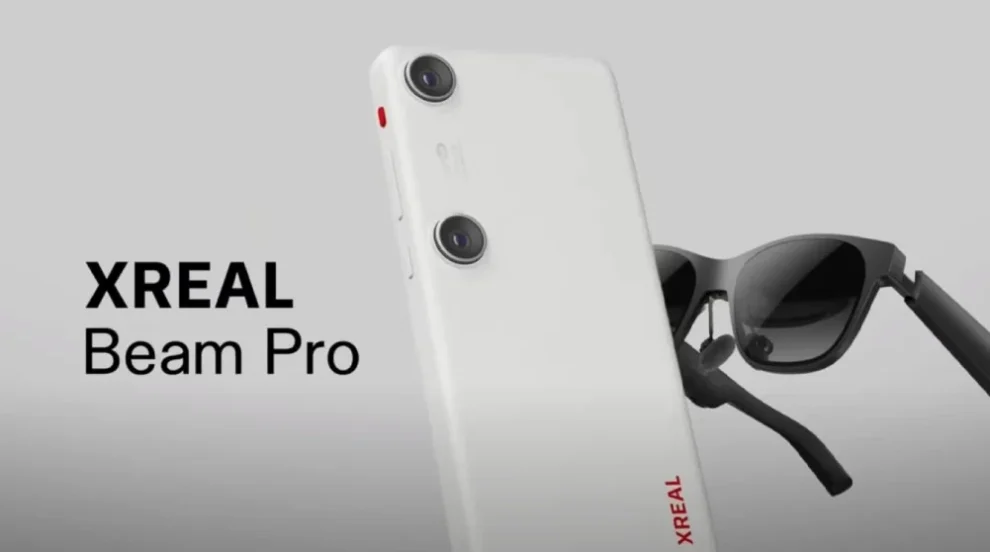A Bridge Between Worlds
The Beam Pro isn’t a new pair of AR glasses itself. Instead, it’s a sleek, Android-powered tablet that acts as the brains behind the operation. Connecting seamlessly to Xreal’s existing AR glasses (Xreal Air and Air 2) via USB-C, the Beam Pro transforms them into spatial computing powerhouses. This approach offers a key advantage: affordability. By leveraging a user’s existing smartphone processing power, Xreal cuts down on production costs, translating to a significantly lower price tag for consumers. The Beam Pro itself is priced at a competitive $200, a stark contrast to the often eye-watering prices of standalone AR headsets.
From Flat to Spatial: Reimagining Mobile Apps
The magic of the Beam Pro lies in its ability to transform the familiar 2D world of mobile apps into a dynamic 3D experience. Xreal’s custom NebulaOS, built on top of Android 14, utilizes a unique spatial UI. Imagine opening your favorite social media app, but instead of a flat screen on your phone, you see posts and updates floating in 3D space around you. The Beam Pro allows you to manipulate these virtual windows, resize them, and even position them in your physical environment. This opens doors for a more immersive and interactive way to consume content and interact with apps.
Beyond Entertainment: A Tool for Professionals
While the Beam Pro caters to casual users with its ability to breathe new life into social media and entertainment apps, its potential extends far beyond. Imagine architects and designers using the Beam Pro to manipulate 3D models in real-time, visualizing projects within their physical workspace. The ability to interact with complex data sets and visualizations in a spatial environment could be a game-changer for various industries.

A Glimpse into the Future: The Rise of Spatial Computing
The Beam Pro positions Xreal as a frontrunner in the emerging field of spatial computing. This technology focuses on integrating digital information with the physical world, blurring the lines between reality and the virtual. The Beam Pro’s user interface, designed specifically for interacting with 3D objects and information, offers a glimpse into this future.
Beyond the Hype: Addressing Potential Concerns
While the Beam Pro’s capabilities are exciting, some potential challenges need to be addressed. Firstly, the reliance on a separate device might feel cumbersome for some users. Carrying around both the Beam Pro and the AR glasses adds an extra layer of complexity compared to standalone headsets. Secondly, the current state of AR app development is still nascent. While the Beam Pro can project existing 2D apps in 3D space, a lack of truly immersive, spatial app experiences could limit its appeal.
The Verdict: A Promising Step Forward, But Work Remains
The Xreal Beam Pro is a significant step forward in making AR technology more accessible. Its affordability and ability to breathe new life into existing apps are compelling propositions. However, the reliance on a separate device and the current limitations of the AR app landscape pose challenges. The success of the Beam Pro will hinge on Xreal’s ability to foster a robust ecosystem of spatial app developers and convince users to embrace this new way of interacting with the digital world.
A Catalyst for Change?
Despite the challenges, the Beam Pro has the potential to be a game-changer. Its affordability could usher in a new wave of AR adoption, attracting both consumers and developers. As the technology matures and developers embrace the possibilities of spatial computing, the Beam Pro could become a stepping stone towards a future where the lines between the physical and digital worlds are seamlessly blurred. The future of AR is bright, and Xreal’s Beam Pro is a bold step in the right direction.
















Add Comment